
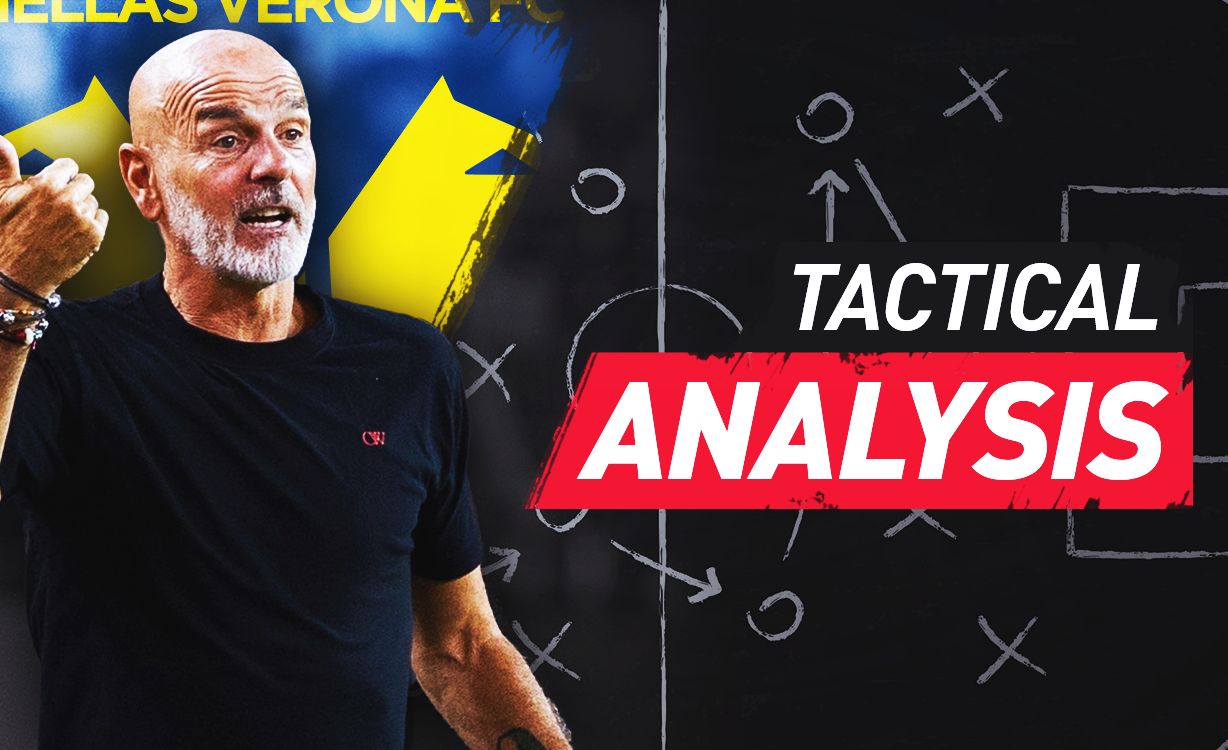 Source:Sempremilan
Source:Sempremilan
AC Milan were 3-1 winners against Hellas Verona in Serie A Matchday 29. The Rossoneri's victory ensured they headed into the March international break in second place and three points ahead of nearest rivals Juventus.
Milan had prolonged spells of possession in the first half (69% ball share) but their first three attempts on goal came via set-pieces. The last of which was a perfectly timed and connected volley by Noah Okafor who forced an acrobatic save from the opposition goalkeeper in the 19th minute.
Gradually, the away side began to create more chances from open play and by the half-time break, Milan not only led the shot count 10-1 but also held a one goal lead. The deadlock was broken when a persistent Theo Hernandez poked the ball home from close range in the 44th minute.
Milan had the perfect start to the second half when Okafor dispossessed an opponent in the final third before forcing a save which Christian Pulisic tapped-in on the rebound.
After going two goals down, Verona began to threaten to pull a goal back and in the 65th minute they succeeded courtesy of a fiercely struck Tijjani Noslin half-volley.
Any concern of a nervy ending to the game for Milan, however, was subsided in the 79th minute when substitute Samuel Chukwueze scored his first league goal for the club. The Nigerian attacker arrived into the box to meet a dropping ball, following a corner kick, and volleyed into the far corner to make it 3-1 and game over.
Here to provide some tactical observations on the win is @Tactics_Tweets.
Manipulating spaces to run into Speaking after the victory, Milan head coach Stefano Pioli said of the game and his team's performance: "We played the match well in my opinion. We were a team, we created a lot, we ran a lot."
The reference of 'running a lot' is likely a nod to how Verona attacked, especially in the opening forty-five minutes. The home side's predominant tactic when in possession was to try and immediately hit their most advanced player.
This resulted in a lot of direct forward balls towards, and into, the final third which meant the Milan players had to do a lot of recovery runs back towards their own goal. And whilst this plan helped Verona regularly reach this part of the pitch, they failed to create either high quantity (3 shots) or quality (0.10 xG) chances in the first half.
However, this aspect of 'running a lot' can also be applied to how Milan attacked Verona. The hosts default out of possession system was 4-4-2, but due to the dynamic positioning of the Milan players during attacking phases the visitors were able to manipulate and manufacture gaps in the opposition structure to then exploit. Here are various examples of this in actuality.
In this passage of play from the 6th minute, you can see the Verona 4-4-2 defensive shape and how Milan pushed both full-backs forward, an early example of this dynamic positioning in action.
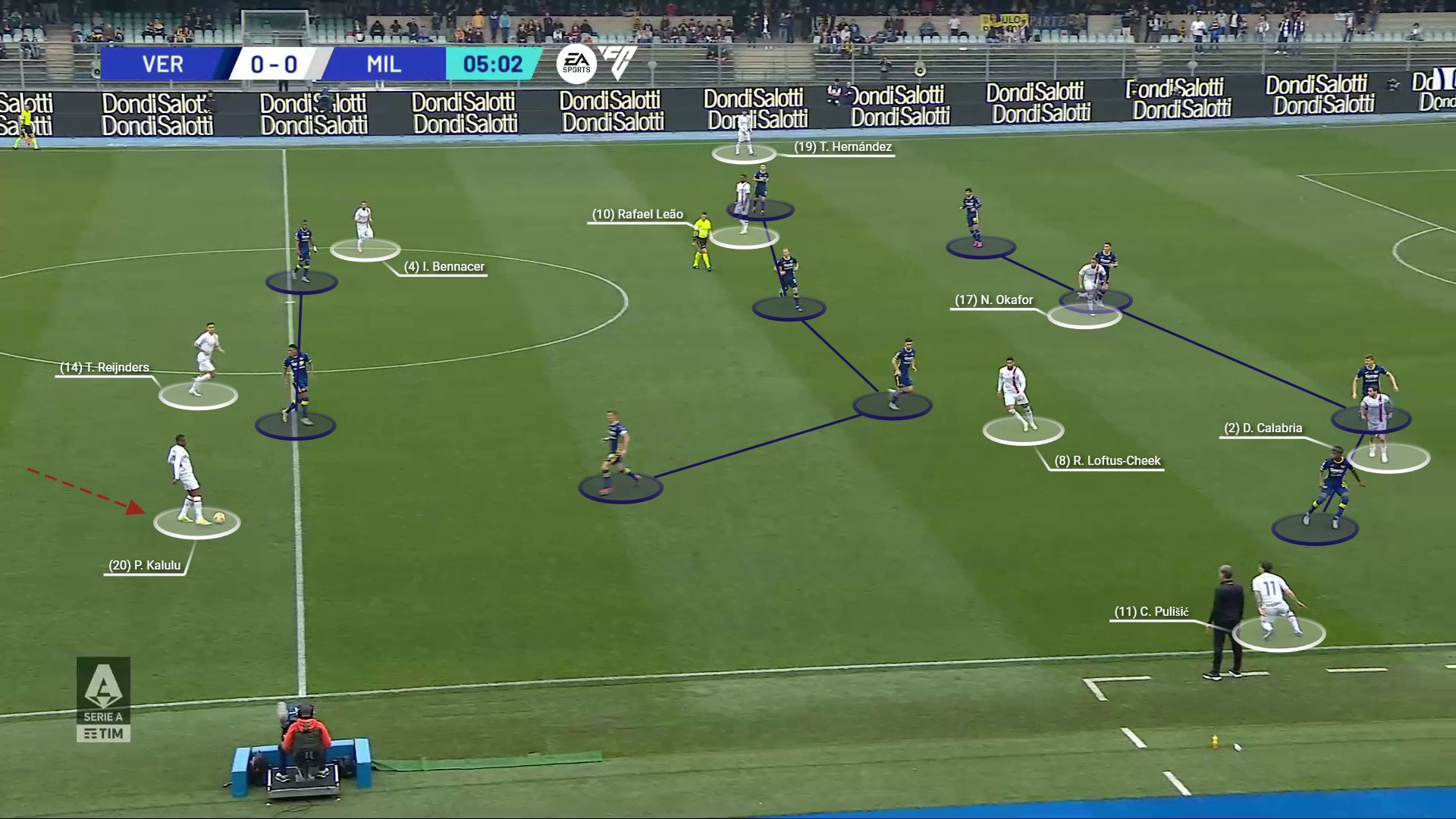 After recycling the ball backwards to their centre-backs, Pulisic spotted Davide Calabria moving towards the ball to offer a passing option up the right wing. In the knowledge that the Verona left-winger, Darko Lazovic, was higher up the pitch after being attracted towards Pierre Kalulu...
After recycling the ball backwards to their centre-backs, Pulisic spotted Davide Calabria moving towards the ball to offer a passing option up the right wing. In the knowledge that the Verona left-winger, Darko Lazovic, was higher up the pitch after being attracted towards Pierre Kalulu...
And whilst all of this played out like Pulisic had planned, instead of attempting to go over the top of the opposition backline, Kalulu opted for the safer pass into Calabria.
 From here, Milan recycled possession again and circulated the ball along their backline before it was eventually worked back over towards their right wing. Now, Pulisic was the player offering the short wide pass.
From here, Milan recycled possession again and circulated the ball along their backline before it was eventually worked back over towards their right wing. Now, Pulisic was the player offering the short wide pass.
And with a number of Verona players suitably baited towards an opponent (see left-back and left centre-back), it was Calabria this time who sniffed an opportunity to attack the vacated spaces in the opposition backline - but the forward pass towards this area was unsuccessful.
 In this next example from the 11th minute, Milan again looked to work an attack up their right wing. Calabria's higher starting position not only created space for Kalulu to carry and progress into, but also offer a passing option which would inevitably bait the Verona left-back.
In this next example from the 11th minute, Milan again looked to work an attack up their right wing. Calabria's higher starting position not only created space for Kalulu to carry and progress into, but also offer a passing option which would inevitably bait the Verona left-back.
However, the Swiss attacker held his position and signaled that he was expecting a near post cutback. Whoever was right or wrong, it was a wasted opportunity for Milan after effective approach play.
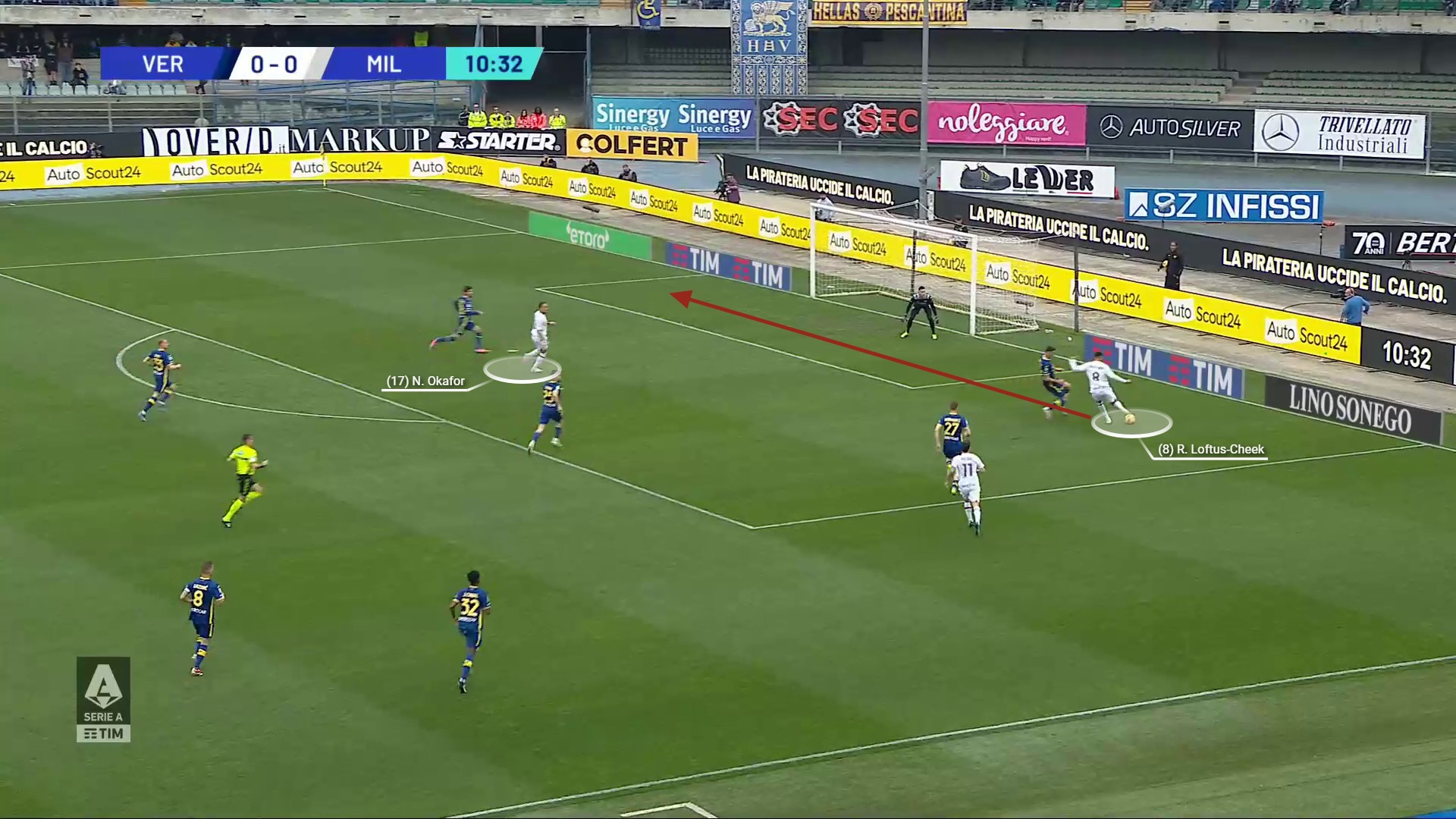 This offensive principle of manipulating the opposition to create spaces to attack into was not only limited to the right wing. In this sequence from the 23rd minute, we can see how the left-sided connection between Theo Hernandez and Rafael Leao also played its part.
This offensive principle of manipulating the opposition to create spaces to attack into was not only limited to the right wing. In this sequence from the 23rd minute, we can see how the left-sided connection between Theo Hernandez and Rafael Leao also played its part.
A simple short pass from Fikayo Tomori to Theo Hernandez baited the Verona right winger towards the French full-back and with Leao holding a wide position on the left flank, thus attracting the opposition right-back towards him, a potential space to attack had been created (yellow box).
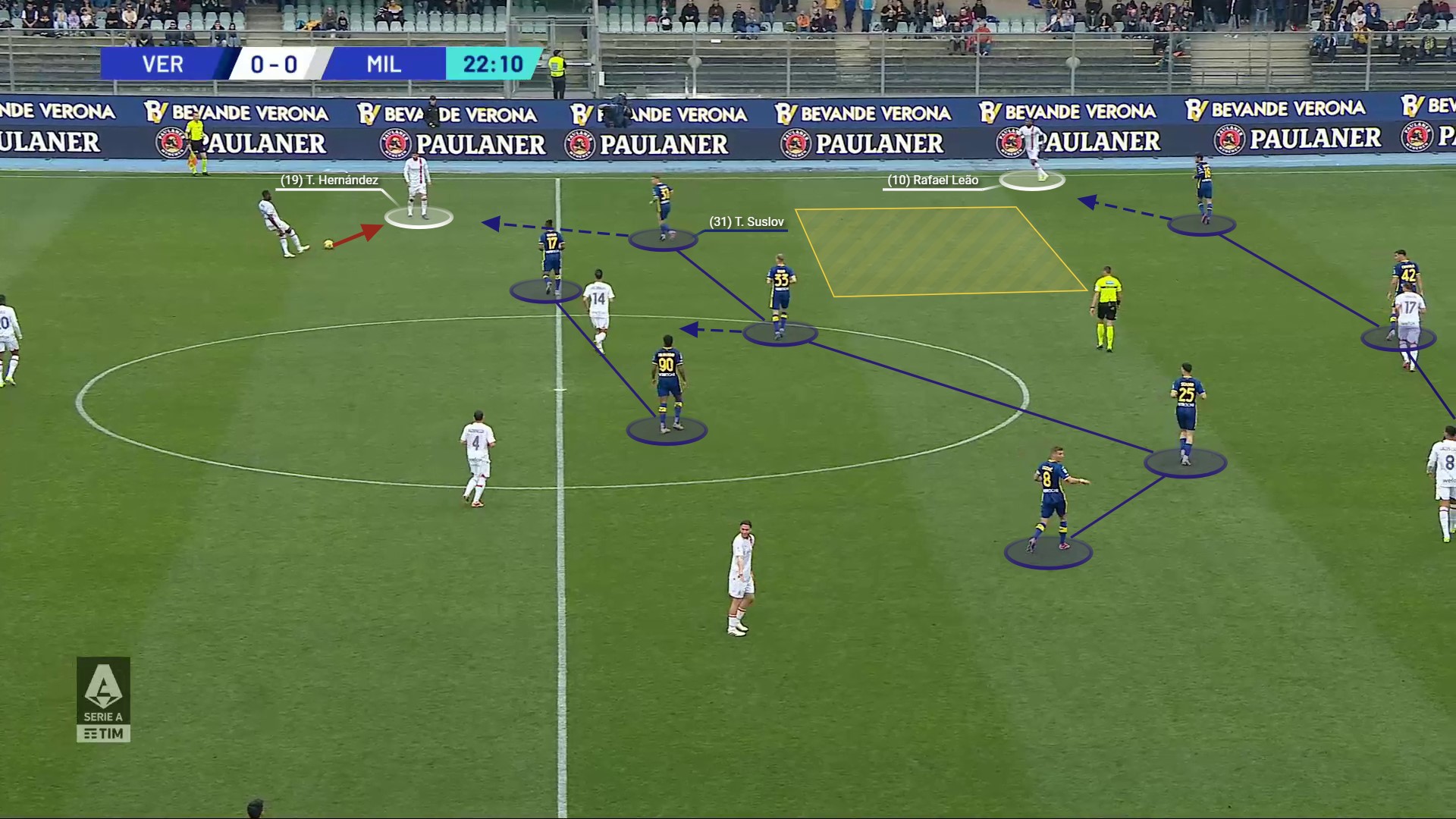 Hernandez and Leao executed a one-two passing combination, with the Portguese attacker also dropping towards the ball to further drag the Verona right-back higher up the pitch.
Hernandez and Leao executed a one-two passing combination, with the Portguese attacker also dropping towards the ball to further drag the Verona right-back higher up the pitch.
With the ball traveling towards Pulisic on the right wing, and the Verona left-back beginning to push out to engage, Loftus-Cheek took a scan to see the picture infield.
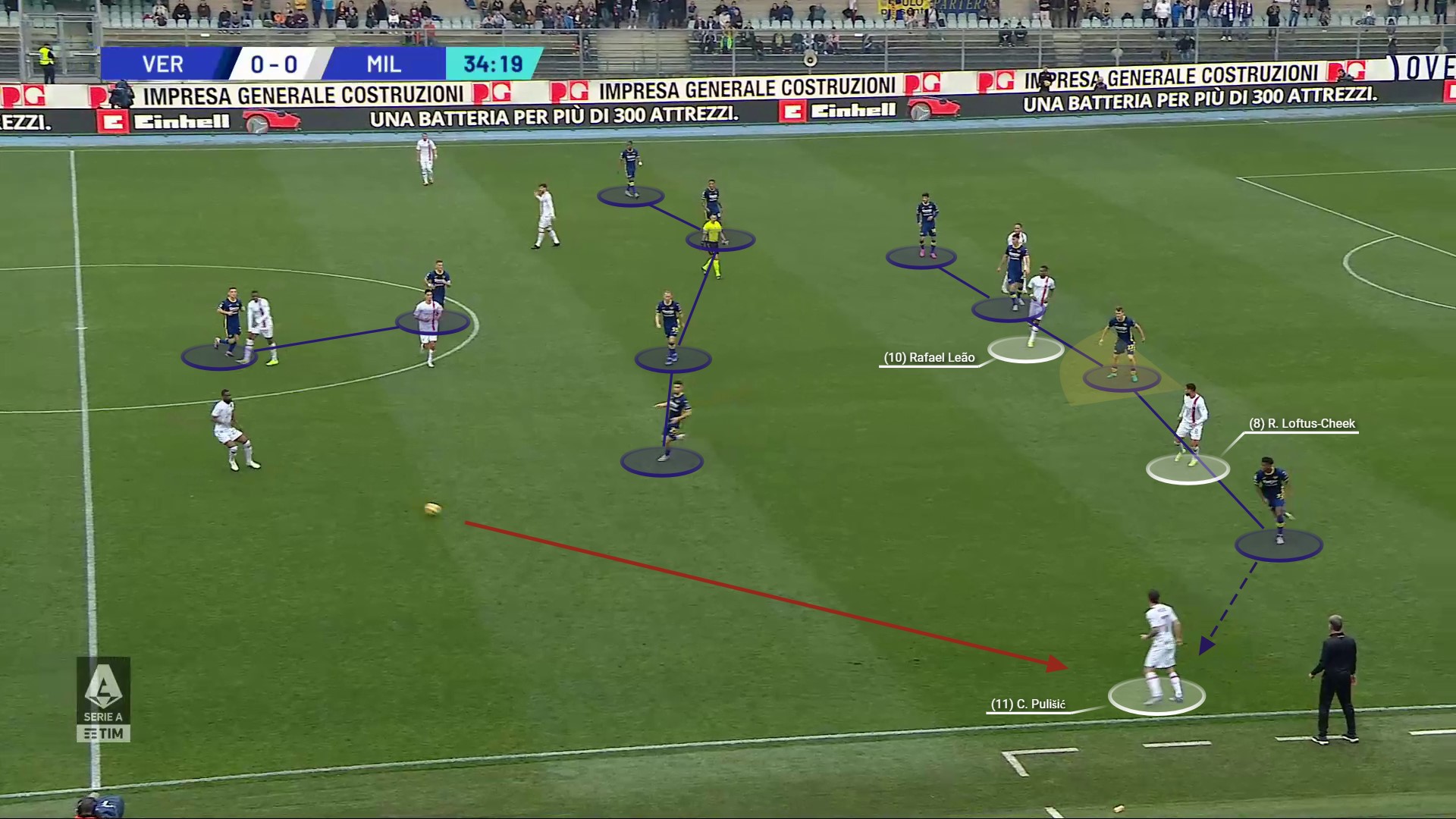 The English midfielder then made a movement out wide, into the space the left-back vacated, but on this occasion it was not necessarily to receive the ball himself.
The English midfielder then made a movement out wide, into the space the left-back vacated, but on this occasion it was not necessarily to receive the ball himself.
Instead, he wanted to attract the Verona left centre-back towards him and to create space in the heart of the opposition defence for Leao (taking up a situational attacking position after the recent corner kick) to exploit.
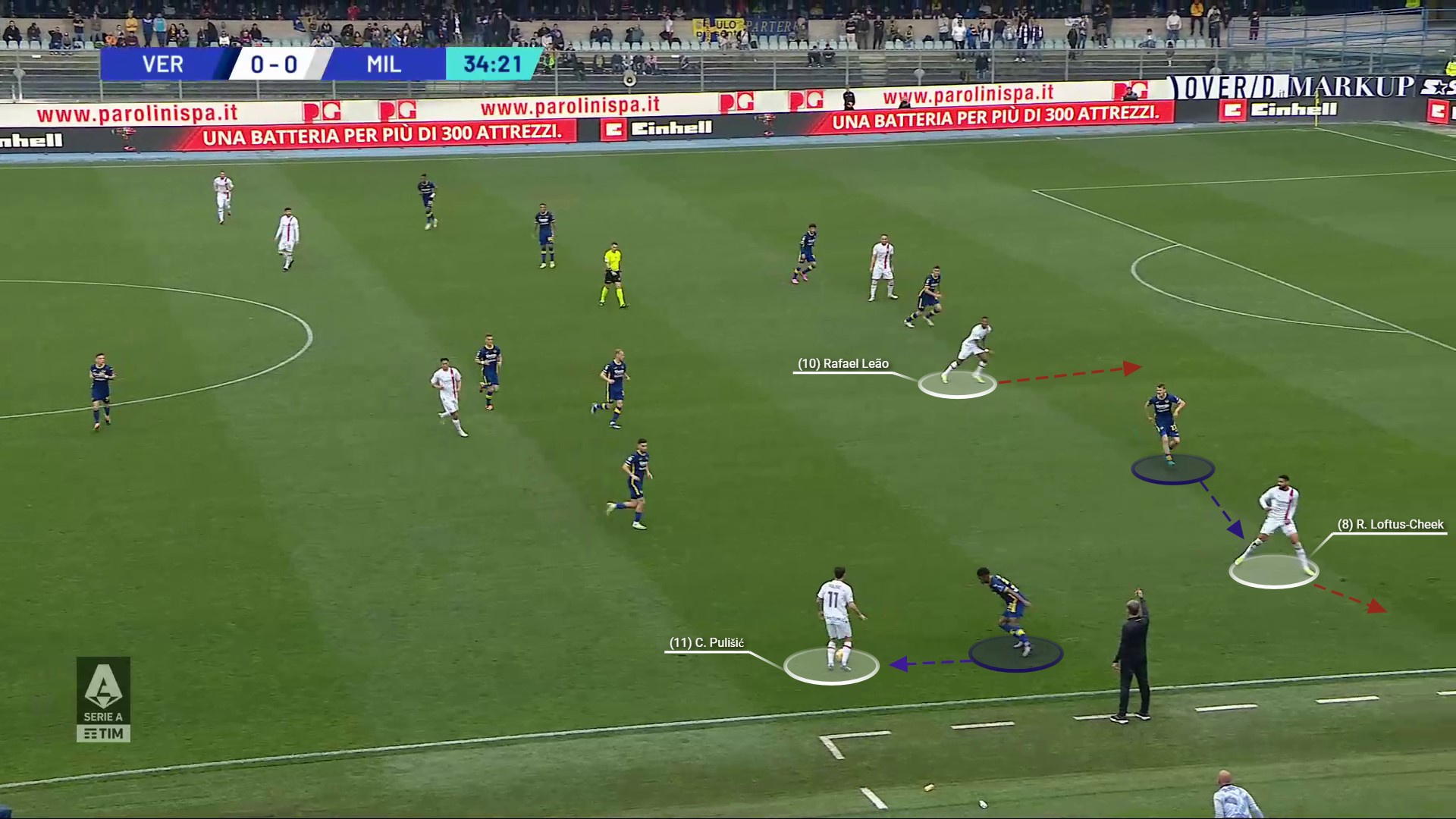 Despite all of these events unfolding as hoped, Pulisic opted against the forward pass into Leao (much to his dismay) and recycled the ball backwards. Perhaps Pulisic did not want to risk losing the ball, as due to his body shape, the execution of the pass into Leao would have likely required him to use his left-foot or outside of his right-foot.
Despite all of these events unfolding as hoped, Pulisic opted against the forward pass into Leao (much to his dismay) and recycled the ball backwards. Perhaps Pulisic did not want to risk losing the ball, as due to his body shape, the execution of the pass into Leao would have likely required him to use his left-foot or outside of his right-foot.
Ahead of the ball, Leao made a double movement (forward run first before changing direction and moving out wide) to create separation between himself and the opposition right-back to receive a forward pass from his French teammate.
 After playing the pass, Theo Hernandez immediately made a forward run to exploit the space he knew would be vacant.
After playing the pass, Theo Hernandez immediately made a forward run to exploit the space he knew would be vacant.
Here, you can see the Verona players each focussed on a designated opponent. In an attempt to exploit any spaces that presented themselves, Theo Hernandez roamed infield.
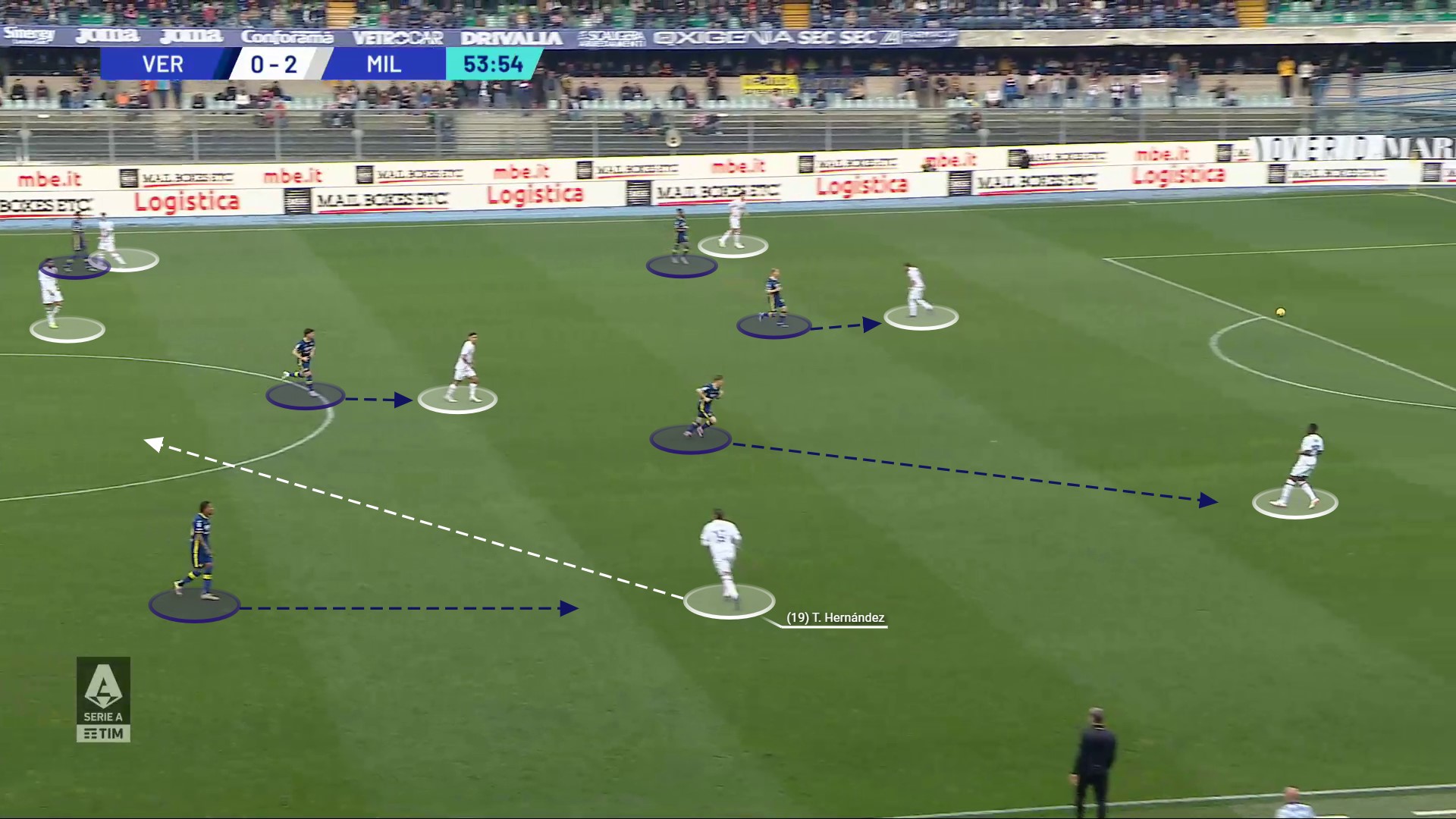 The reason being, the Milan left-back had recognised that the Verona left centre-back was jumping out to cover Loftus-Cheek and as such, there would be gaps left behind in the opposition backline. With Mike Maignan seeing all this unfold too...
The reason being, the Milan left-back had recognised that the Verona left centre-back was jumping out to cover Loftus-Cheek and as such, there would be gaps left behind in the opposition backline. With Mike Maignan seeing all this unfold too...
In addition to gamestate playing its part, Verona adjusted the way they attacked (more focus on wing play) and defended (4-1-4-1) and became the more dominant team. This assessment is also supported by the statistics, with the hosts having the majority of possession (64%) and out shooting Milan 11-5 during this period.
In the end, Milan had done more than enough to warrant their win and despite Verona's late 'dominant' spell, they never truly threatened Mike Maignan's goal.
Business end of the season After the international break, Milan are into the business end of the season. In addition to trying to hold onto second spot in Serie A, the Rossoneri also have a European trophy to contend for. Individual and collective quality will no doubt make the difference in these goals, but sometimes there's no substitute in football for good, old fashioned running.
More Stories / The Match 
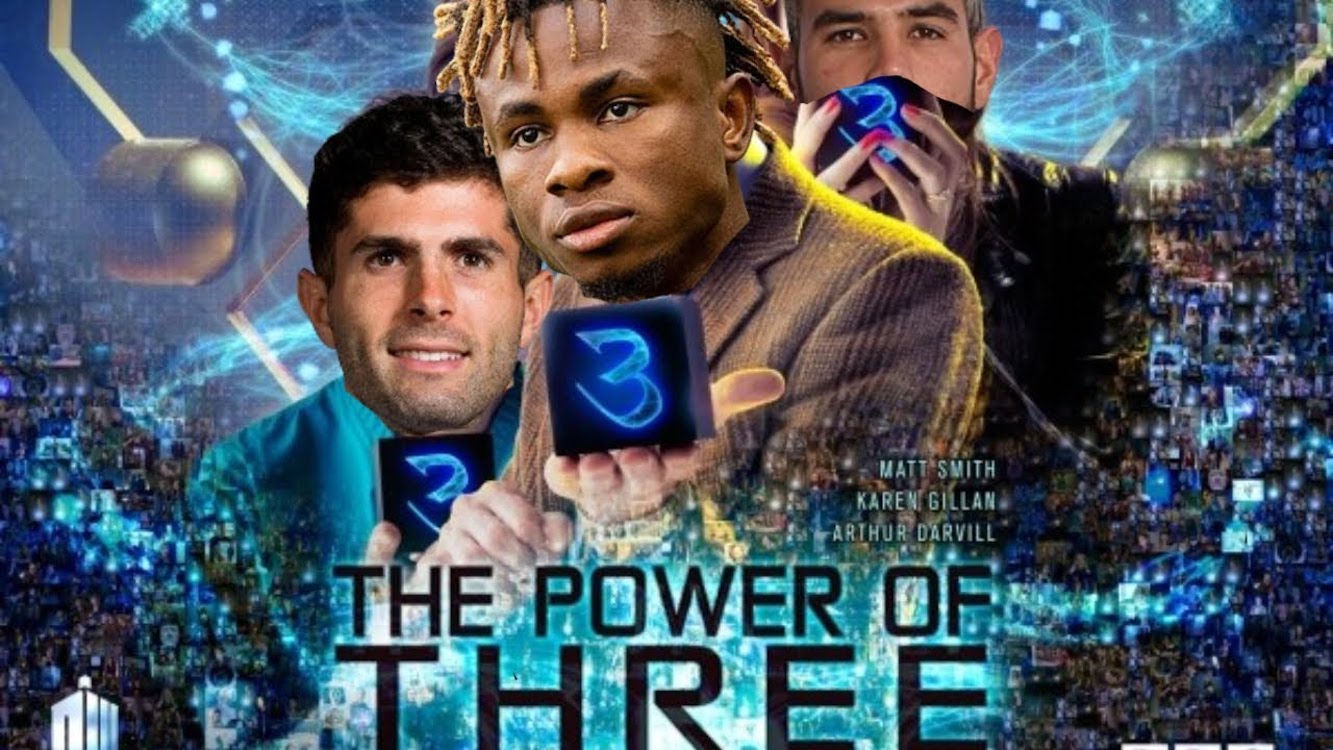
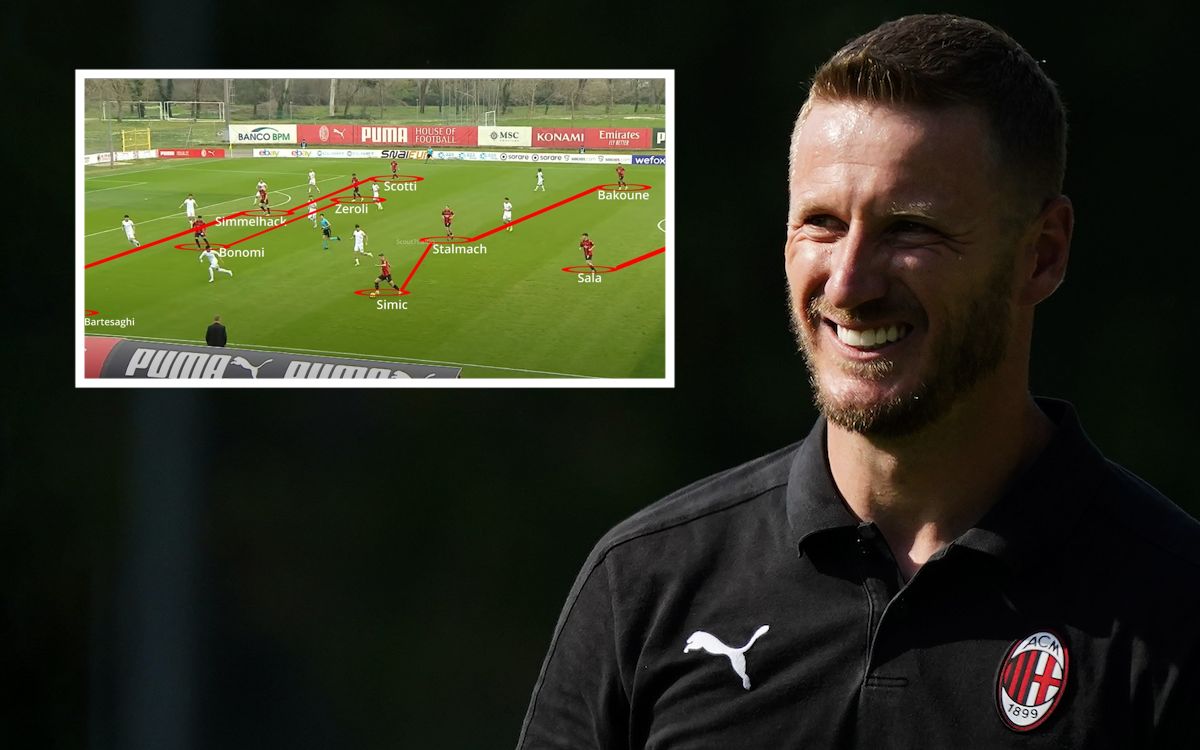

Install App
Largest Football Social Network

